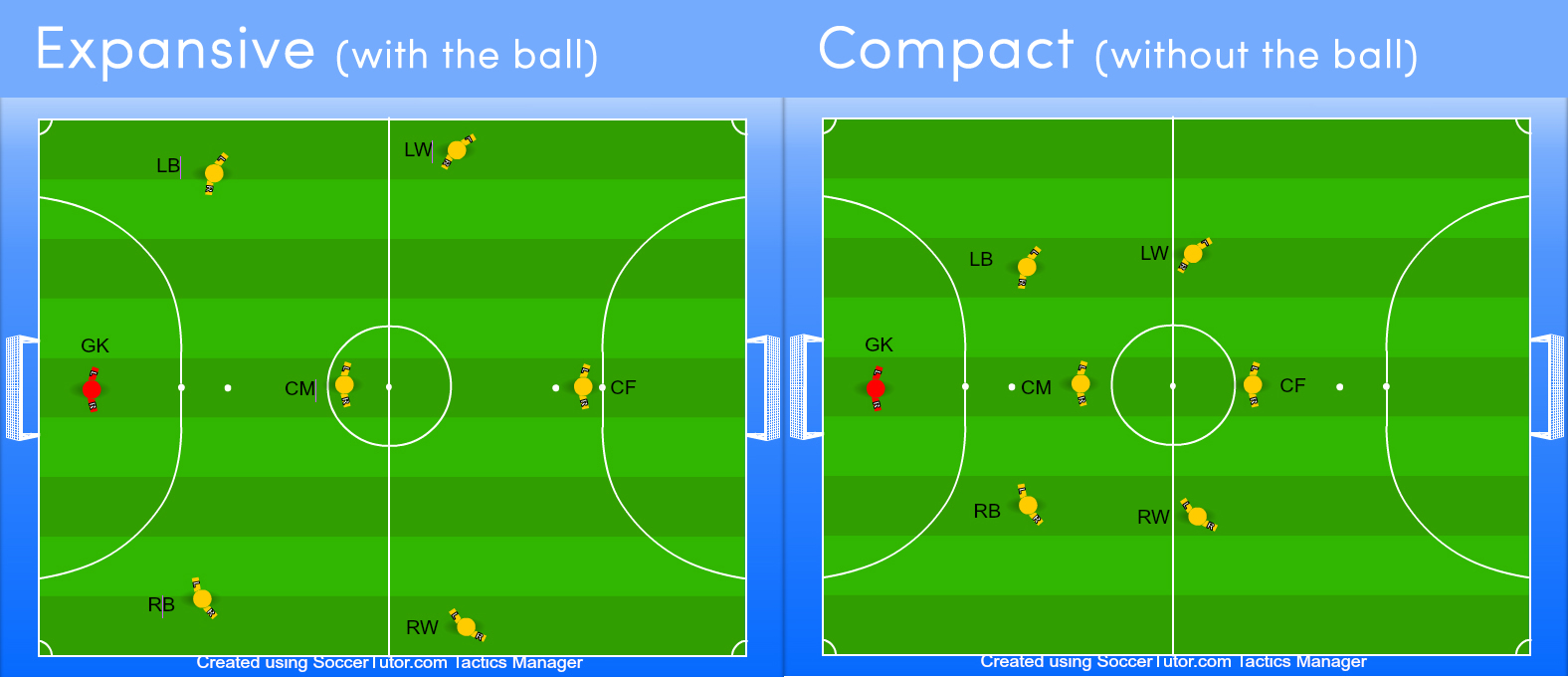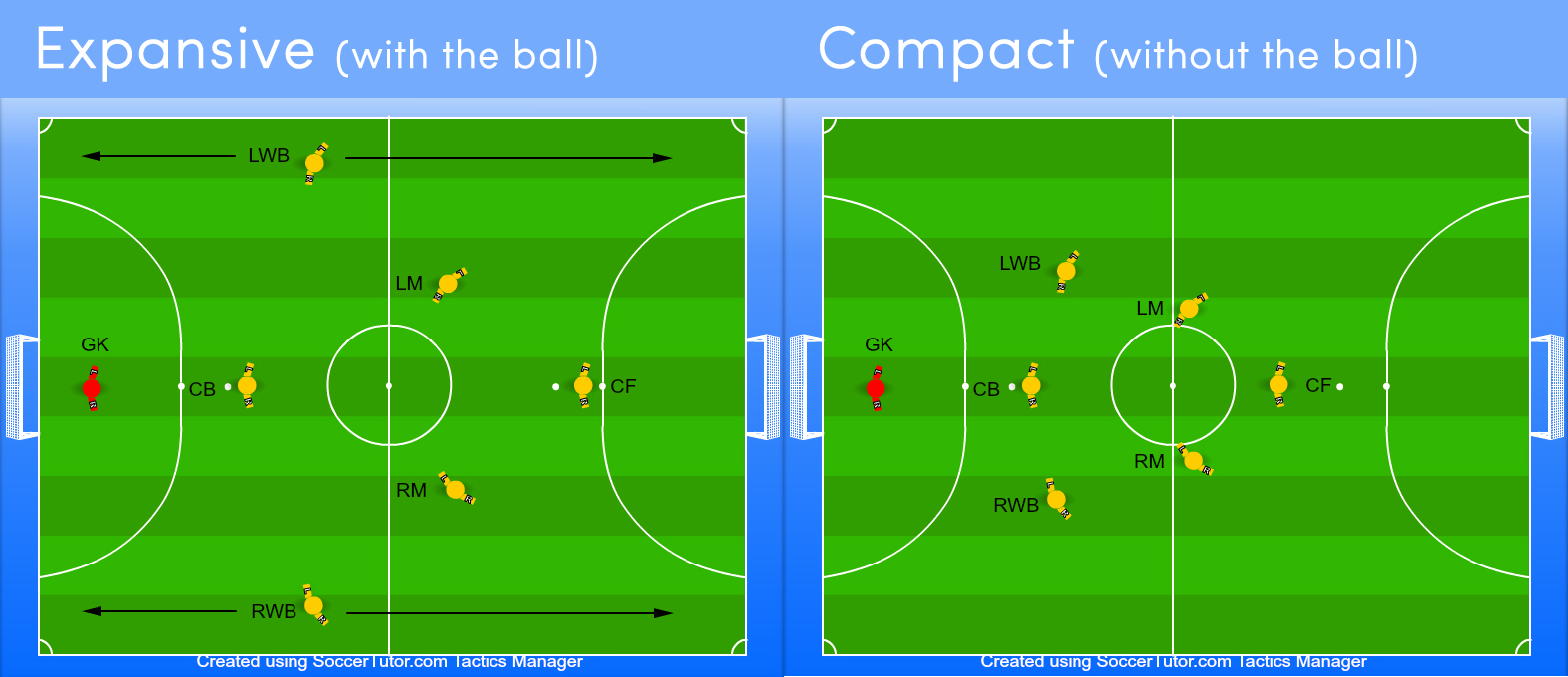7v7 Formations
Once they move to 7 a side football, most coaches will start to introduce the idea of a formation more than they did at 5 a side and give players specific roles. That doesn't necessarily mean the same player has the same role in every match (telling an U9 player that they're a "defender" and only playing them in defence all season may well not fit with your philosophy on player development) but getting the players used to what their position in that game entails will probably be something you'll want to start looking at.
A note on the diagrams below: some show "expansive" and "compact" - these are just to demonstrate how the formation might look either with the ball (width, depth) or without the ball (compact). Nobody is saying these positions are static or hard "rules" and of course, depending on where the ball is on the pitch, the whole team will be encouraged move and be dynamic anyway.
The 2-3-1 Formation

By far the most common formation in 7 a side football, the advantages are obvious - every area of the pitch is covered, you have width in attack and from goal kicks and the players can easily drop in and be a compact "unit" (that can move around the pitch depending on where the ball is) when out of possession. If one of the defenders pushes forward with the ball, the other can come across and cover or the central midfielder can drop in and provide cover.
The 3-2-1 Formation

This formation introduces the idea of wing backs and getting your width from 2 players who are expecting to both attack and defend with energy and pace. They operate around a central diamond of one centre back, 2 midfielders and a central forward. The players in the wing back roles need lots of energy to get up and down the pitch. If they see themselves as "wingers" and neglect the need to track back and help defensively then your centre back could end up very isolated. Similarly, if they play as out and out defenders, you are liable to end up a little toothless in attack without the extra player(s) to help. What I like about this formation though, is that depending on the strength of the opposition and the situation in the game, it can very easily switch from being a super-attacking formation (essentially a 1-4-1) to a super defensive formation (3-2-1) simply by changing the main role of the 2 wide players.
The 2-2-2 Formation
This has been mentioned by a number of our coaches as their preferred formation, but I'm waiting for some information on how they set it up. I assume a simple set of three banks of two players, which makes it very simple for young players to know their roles. Danger of course is that two players who think they're strikers could leave you overrun in midfield / defence.